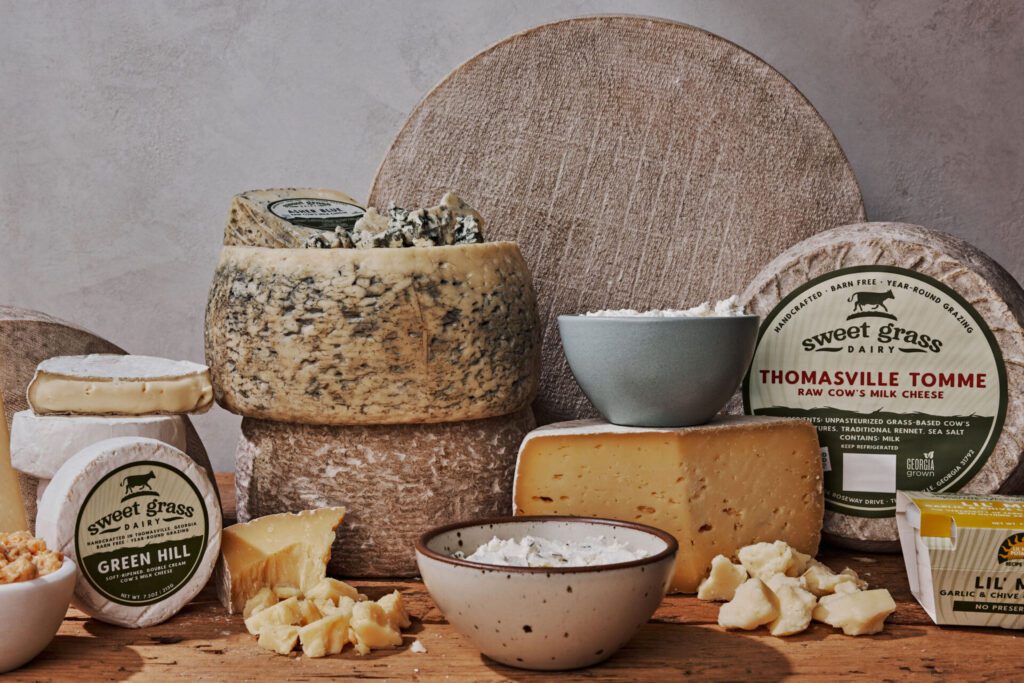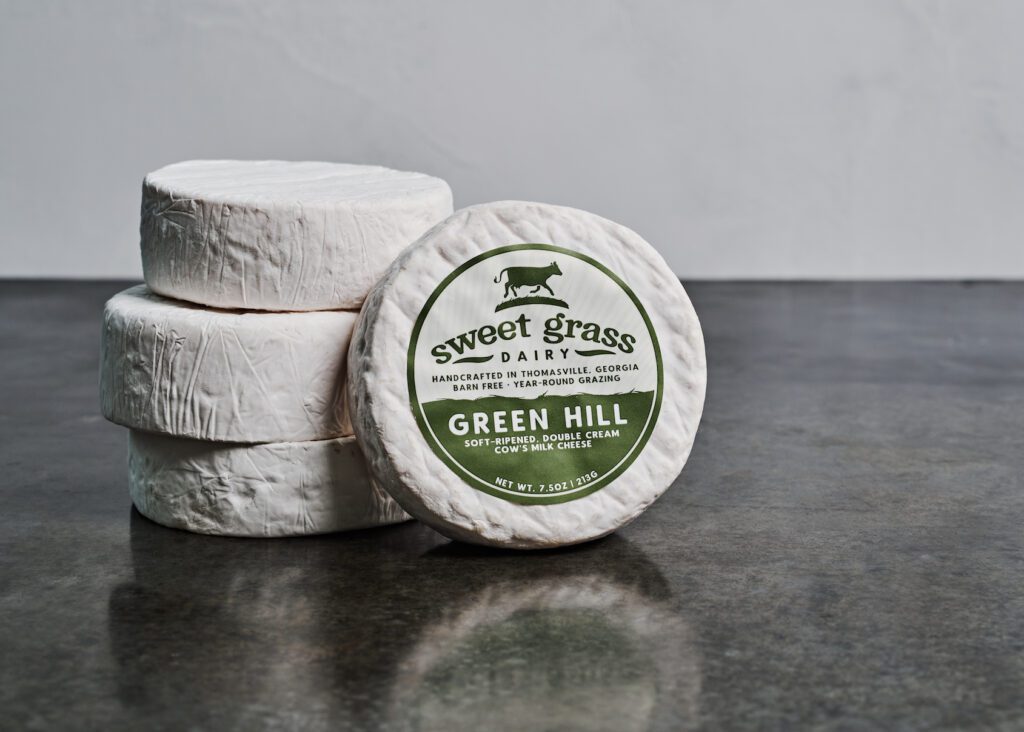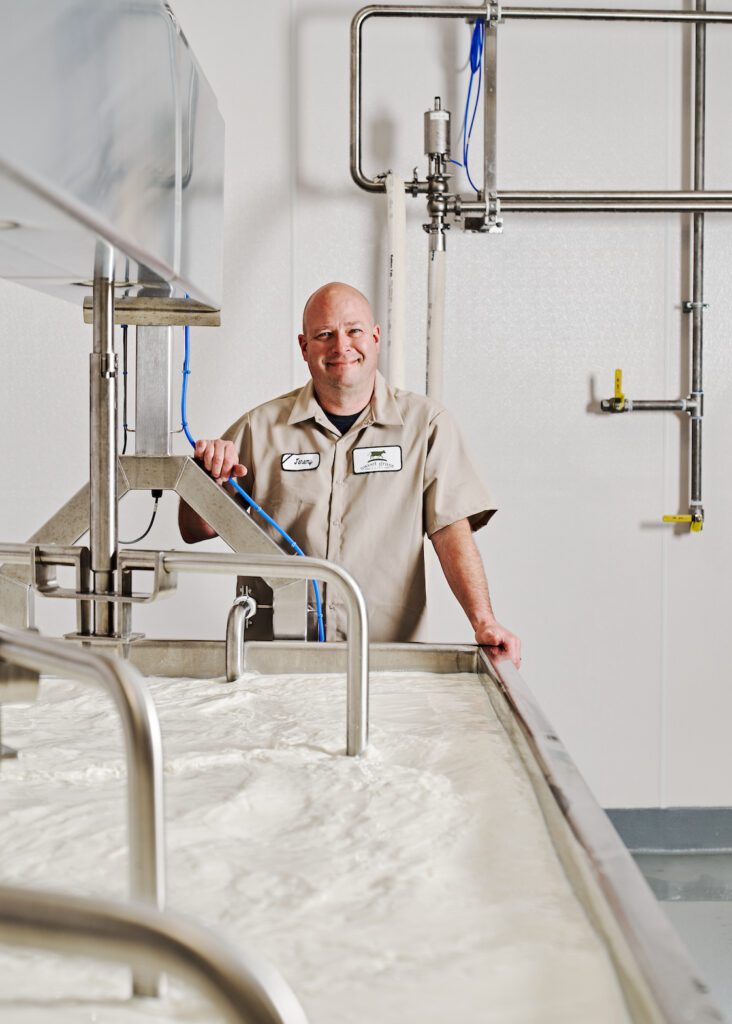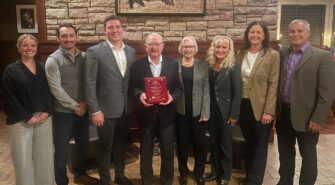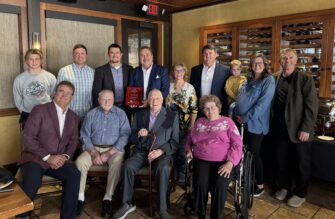Preeminent thought leader on generational wealth to share insight at family business conference
Recent News
The owners of Sweet Grass Dairy had reached an inflection point.
Second-generation owners Jeremy and Jessica Little recently had purchased the Georgia-based creamery from Jessica’s parents, Desiree and Al Wehner, and it literally was time to transition the business into its next generation.
In preparation to scale, Jessica participated in the Goldman Sachs 10,000 Small Businesses program, which helps businesses put together growth plans. In this case, it also introduced her to another valuable resource: Meghan Lynch, president and CEO of Six-Point Creative, who had gone through the program and returned to speak on a panel.
Jessica Little
“Jessica and Jeremy knew brand strategy and marketing would be key to scaling their operations, so after my talk, we met to see if my team could help fill the gaps in their knowledge, and it turned out to be a perfect fit,” said Lynch, who leads the Massachusetts-based firm.
Until this point, Sweet Grass Dairy cheese had been a regional favorite at farmers markets, but with four boys to put through college and the interest in building a legacy brand, the Littles knew they would need to grow the business.
“They started doing this by creating relationships with chefs and food service distributors, but they knew that in order to scale, they would need to make the brand successful with consumers at retail and build a large new production facility,” Lynch said. “They did not have experience growing a retail brand, and the stakes were too high to get it wrong. For the first time in the brand’s history, supply would be greater than demand.”
Meghan Lynch
Lynch and Little will detail their experience supporting the growth of Sweet Grass Dairy in a March 29 webinar called Leading at Scale organized by the Prairie Family Business Association.
We caught up with Lynch, who also is a Visionary Sponsor of the Prairie Family Business Association, for a deeper look at family business branding and a preview of the upcoming webinar.
What kind of role did branding play in the ability of Sweet Grass to grow? What kind of strategy did you apply?
Chefs buy on flavor, and Sweet Grass Dairy had primarily grown by simply getting chefs to taste the product. Once they could taste the cheese and were inspired by it, the cheese sold itself. For a retail buyer though, you need to both connect the buyer with the brand and get them excited, and then you also need to communicate through packaging and promotion to the end consumer in the grocery store.
Now it isn’t just about relationships or flavor. Success hinges on how quickly and efficiently you can communicate and connect with people without ever meeting them or before they ever taste the product. So getting the brand messaging and the packaging just right was absolutely critical to their success. They were also competing in a category when a lot of the specialty cheese brands were owned by global conglomerates with deep pockets. Their competition could outspend them, so they had to be smart and listen more closely to the customer.
In order to stand out, we created packaging that succinctly told their brand story, which is about barn-free cows able to graze 365 days a year because of the unique climate of south Georgia. Sweet Grass sources their milk from their family’s fifth-generation dairy farm, now co-owned by Jessica’s brother Clay and her parents. We had to educate retail buyers at Whole Foods, Kroger, Publix and others about what it means to have cheese from Georgia instead of Vermont or California and had the opportunity to connect with consumers who were looking for more grass-fed dairy and sustainable food choices.
For those not as familiar with the concept, what exactly do you mean by “branding?” What does that encompass?
I think the easiest way to explain “brand” is simply to substitute it with the word “reputation.” You can’t control how other people think about your business or talk about it, but you can influence it. Influencing reputation is the work of branding.
We have lots of tools to use in the work of branding, from what the brand sounds like and looks like aesthetically, to product selection and quality, to the choice of partners like distributors and retailers, to the relationships people have with the company. When the brand is smaller, it is much easier to influence its reputation because it is mostly based on relationships and individual interactions. As the brand scales, you need to use different tools that are less relationship-oriented. It is the difference between Jessica being able to cultivate a relationship with a chef and spend an hour letting them taste the cheese, ask questions and get to know her and the products versus a consumer in Whole Foods scanning the cheese case and deciding what to buy for dinner. Packaging never used to be a major vehicle for Sweet Grass’s reputation, but as it grew larger, packaging became one of the primary ways that people decided whether or not they would ever taste the cheese. The “brand” doesn’t change, but the tools used to communicate the brand do, and the level of strategy that you need to put into it changes. The opportunities are bigger but so are the risks of damaging that reputation.
In general, what do you find family businesses need to focus on when it comes to branding? Are there some common blind spots that you help them address?
Many family businesses have a hard time communicating what is special about the company or its products. It is something that is so innate or obvious to them that they often undervalue it or think that it is also obvious to others. Or it is so intangible that they default to language that means a lot to them like “our people” or “our quality” but doesn’t easily translate to people outside of the business. This can be a very difficult gap to close and often takes a lot of careful listening and attention to detail to get the messages right.
I also see a lot of family businesses struggle because their definition of success is fundamentally different than the rest of the market’s. For publicly traded companies and venture capital-funded startups, short-term wins and top-line growth are often the goals. For family businesses, sustainability and relationships are often more important. So family businesses often make the mistake of looking to their competition for strategic insights when their goals are completely different. They need to create a positioning and growth strategy that is completely different than what anyone else is doing, and that is a tough place to be. The stakes are high, and you can’t rely on what works for other companies. We have to listen deeply to what success looks like for them and bring them back strategies that are fundamentally different than the rest of their industry and be able to give them the confidence to blaze a new trail.
As marketing evolves, are there some changing branding tactics that businesses should be considering?
Specifically for family businesses, strategic use of video and social media can be an opportunity to scale conversations that used to be one-on-one and were often one of the original reasons why the company grew organically in its early years. Family businesses do relationships really, really well. Telling stories can be a massive opportunity to connect customers emotionally with the values and people behind the business, but it can also be overwhelming and even risky if it isn’t used strategically. Family businesses will sometimes dip their toe in, get overwhelmed and then decide that it “doesn’t work” without ever figuring out what exactly it is that they want to use these tools to say, who they want to connect with and how they will know if it is successful.
I also see family businesses under-leveraging their own status as a family business in their brand communications and positioning. According to the 2019 Edelman Trust Barometer special report on implications for family businesses, family-owned enterprises in the United States enjoy a 24-point trust advantage over businesses in general. This is a significant competitive advantage for family businesses rarely capitalized on as these enterprises scale.
As jacks-of-all-trades, sometimes family business owners try to do it all – including marketing. But what would you suggest they keep in mind as far as marketing talent and scaling? How do you know it’s time to hire for that skill or outsource to a firm?
There is always an inflection point, often around 25 to 75 employees, where marketing and branding must become a separate discipline and strategic priority within the organization. When the business is smaller than that, it is much easier to keep sales and marketing as one function within the company or allow a founder or CEO to be the primary keeper of the brand. Usually, you see it first as a bandwidth or delegation issue. Sometimes, the leadership team will know that marketing should be an opportunity, but it keeps slipping down the priority list. Other times, it is getting bottlenecked with one person, but every time they try to delegate that work, it is much less effective, which reinforces the idea that they can’t let it go. The solution is two-pronged. First, you need to step back and get extremely clear about the positioning and marketing strategy: what you are trying to communicate, who you are speaking to and how you can differentiate yourself and become irreplaceable to your customers. We have developed our Brand Strategy Workshops to help the leadership teams of family businesses do this with the support of expert facilitators. Then, you need to figure out who you need to get this accomplished, not how you are going to do it. When you have the “who not how” mindset, it becomes much clearer whether you need a new internal hire or external specialists or some combination of the two. It also becomes easier to evaluate the skill sets that already exist within your organization and see if and how they can grow with you, as well as what their limitations might be.
What are you hoping businesses will take away from the Prairie Family Business webinar?
There are so many lessons within the Sweet Grass Dairy story that I think each attendee will likely hear something a little different that resonates with their own experience and struggles. Overall, though, fear can really hold family businesses back from capturing opportunities and evolving their brands to be sustainable in the future. I hope that businesses will hear how Jessica and Jeremy have addressed fears and managed risk in their business so that they can still lead effectively and build a legacy brand in a highly competitive category.
To learn more and register for the Prairie Family Business Association webinar, click here.



